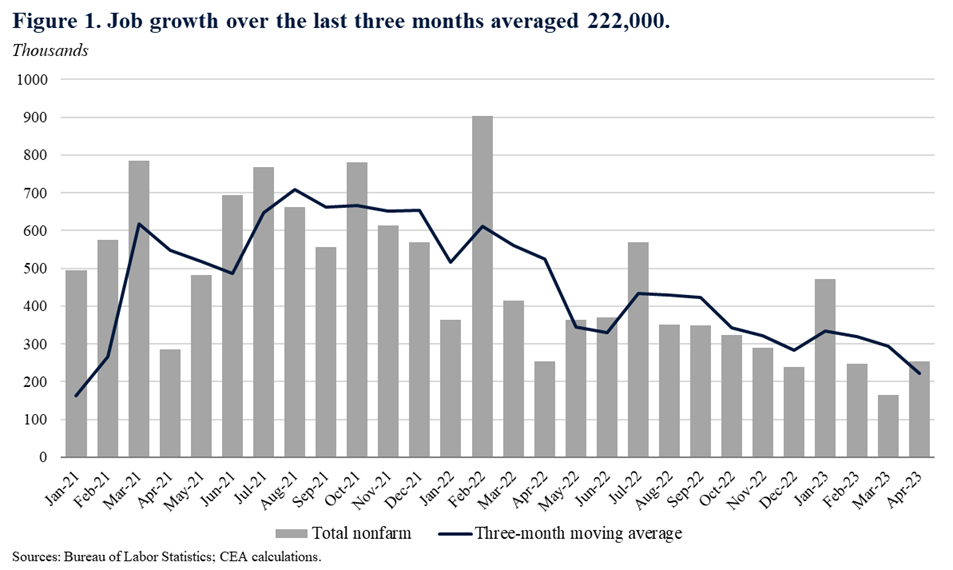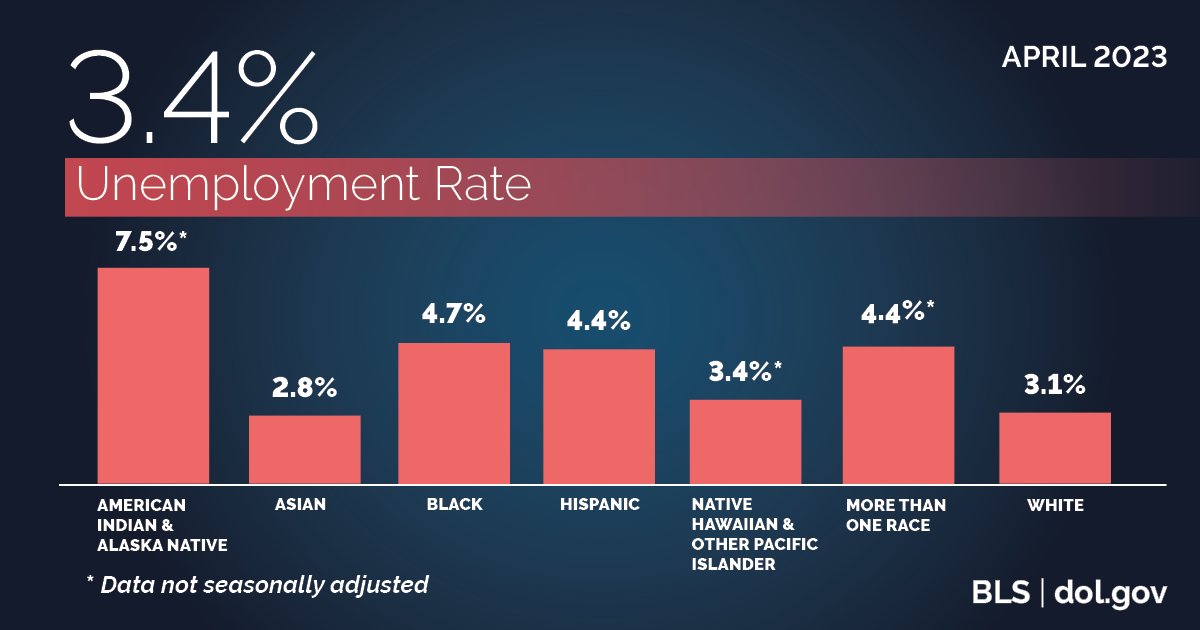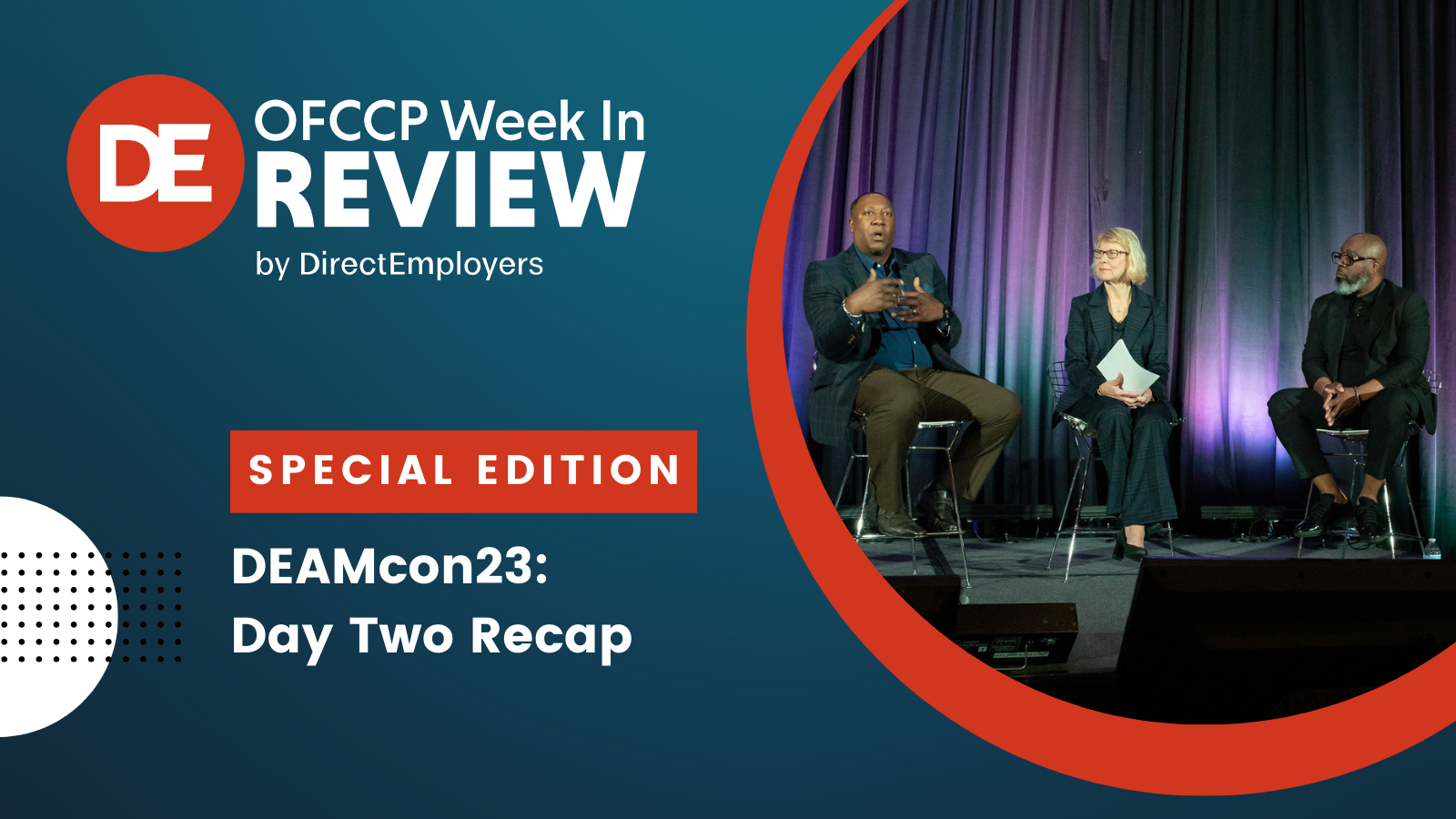 The DE OFCCP Week in Review (WIR) is a simple, fast and direct summary of relevant happenings in the OFCCP regulatory environment, authored by experts John C. Fox, Candee J. Chambers and Cynthia L. Hackerott. In today’s edition, they discuss:
The DE OFCCP Week in Review (WIR) is a simple, fast and direct summary of relevant happenings in the OFCCP regulatory environment, authored by experts John C. Fox, Candee J. Chambers and Cynthia L. Hackerott. In today’s edition, they discuss:
- OFCCP Extended Enforcement Moratorium for Veterans’ Affairs Health Benefits Program Providers
- COVID-19 Vaccine Requirement for Federal Contractors to End on May 11
- NLRB Reverted Back to “Setting Specific” Legal Standard on How Employers May Deal with Abusive Employees
- U.S. EEOC Published 2nd Notice on Proposal to Eliminate Counting Employees to Determine Filing “Type” for EEO-1 Component 1 Data Collection
- JOLTS Report: Job Openings Decreased (for 2nd month in a row) this time by 384k in March as the U.S. Jobs Market Continues to Contract
- White House Announced Three New Actions to Mitigate AI Risks
- Economy Added 253k Jobs in April, Unemployment Rate Decreased Slightly to 3.4% But Long-Term Unemployment Increased as the “Great Resignation” Continues
- In Brief
- Looking Ahead: Upcoming Date Reminders
The OFCCP Week in Review Team Wants Your Feedback!

Monday, May 1, 2023: OFCCP Extended Enforcement Moratorium for Veterans’ Affairs Health Benefits Program Providers
Two-Year Moratorium Extension Will Last Until May 7, 2025

This is not the TRICARE exemption (which remains in effect) but is rather a related medical benefits program for veterans. OFCCP uses the phrase “VAHBP providers” as an umbrella term to encompass health care providers that contract with the U.S. Department of Veterans Affairs, including those in Veterans Affairs Community Care Networks, as well as Veterans Care Agreements created pursuant to the 2018 VA MISSION Act. VAHBP contracts are a prime federal contract invention to provide veterans with better access to medical services by filling in gaps in care in Veterans Administration medical services, which are either “insufficient” or “non-existent.” These are limited-use contracts typically aimed at providing veterans with highly specialized care and/or extended care services.
The moratorium does not apply to the investigation of discrimination complaints. It also does not apply to healthcare providers holding separate, independent, non–healthcare–related federal contracts or subcontracts. In addition, this moratorium does not affect Medicaid and Medicare healthcare providers, which OFCCP does not consider as contractors or subcontractors subject to its jurisdiction.
How We Got Here
On May 7, 2014, OFCCP issued DIR 2014-01, establishing a moratorium to suspend enforcement of the affirmative obligations required of all TRICARE subcontractors for a period of five years. On May 18, 2018, OFCCP subsequently extended the moratorium until May 7, 2021, under DIR 2018-02. That 2018 Directive also expanded the moratorium to include VAHBP providers (see our story here.) OFCCP intended that extension to provide time to sufficiently address additional stakeholder feedback and prevent protected veterans and their families from encountering further difficulty accessing healthcare.
From there, OFCCP began a rulemaking process that resulted in the publication of a Final Rule on July 2, 2020. That Final Rule – entitled “Affirmative Action and Nondiscrimination Obligations of Federal Contractors and Subcontractors: TRICARE Providers” – took effect on August 31, 2020 (see our story here). With that Rule, OFCCP reconsidered its legal position and determined that the agency lacked the authority to regulate healthcare providers solely because they participate in TRICARE. The agency also – as an alternative – established a national interest exemption for TRICARE providers to improve access to healthcare for active and retired service members and their families by removing OFCCP’s regulatory burdens.
In the preamble to that Final Rule, OFCCP confirmed its jurisdiction over VAHBP contracts, but noted the moratorium on their enforcement under DIR 2018-02. The agency also stated that it would consider future “sub-regulatory guidance” (i.e., interpretive rules and policy statements) on them.
To that end, on October 19, 2020, OFCCP issued the original version of Directive 2021-01 extending OFCCP’s enforcement moratorium for all VAHBP providers by two years, through May 7, 2023. As explained above, the agency’s May 1st, 2023 revision to that Directive extended this moratorium to May 7, 2025.
Monday, May 1, 2023: COVID-19 Vaccine Requirement for Federal Contractors to End on May 11
New Executive Order(s) on the Way
Pending Litigation Likely Will Be Rendered Moot
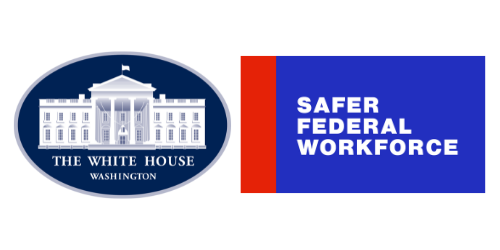
Our most recent story discussing the landscape of pending litigation challenging the COVID-19 vaccine requirements for federal contractors (including the multiple injunctions against its enforcement) is here. However, it appears now that all these challenges will be rendered moot. The same day as the White House announcement, the Safer Federal Workforce Task Force posted two announcements, one covering Executive Order (“E.O.”) 14042 (“Ensuring Adequate COVID Safety Protocols for Federal Contractors”) and the other covering E.O. 14043 (“Requiring Coronavirus Disease 2019 Vaccination for Federal Employees”).
Both announcements (available here and here) stated:
“[…] In the coming days, President Biden will be issuing an Executive Order rescinding the vaccination requirement for Federal employees and COVID-19 safety protocols for Federal contractors, effective at 12:01 am on May 12, 2023.
In the interim, agencies should continue to take no action to implement or enforce the COVID-19 vaccination requirement pursuant to Executive Order 14043 on Requiring Coronavirus Disease 2019 Vaccination for Federal Employees to ensure compliance with the applicable preliminary nationwide injunction.
Similarly, with respect to Executive Order 14042 on Ensuring Adequate COVID Safety Protocols for Federal Contractors, agencies should not take any steps to require covered contractors and subcontractors to come into compliance with previously issued Safer Federal Task Force guidance or enforce any contract clauses implementing Executive Order 14042.
The Safer Federal Workforce Task Force will issue further guidance following an Executive Order.”
Monday, May 1, 2023: NLRB Reverted Back to “Setting Specific” Legal Standard on How Employers May Deal with Abusive Employees
Standard Requires “Case-by-Case” Analysis
Decision Will Make It Trickier for NLRA-Covered Employers to Impose Discipline
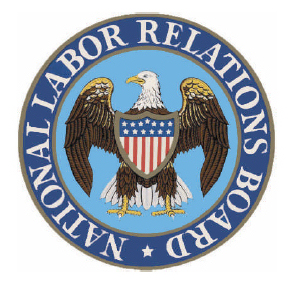
“No federal court has ever rejected any of the three setting-specific standards” to discipline workers who make profane, harassing, or discriminatory remarks in the course of a workplace dispute, the Board noted in its statement. Those standards are (1) the Atlantic Steel (245 NLRB 814 (1979)) test, which governs employees’ conduct towards management in the workplace; (2) the totality-of-the-circumstances test, which governs social media posts and most cases involving conversations among employees in the workplace; and (3) the Clear Pine Mouldings (238 NLRB 69 (1978)), standard, which governs picket-line conduct, the NLRB explained.
What Standard Did the Board Overrule?
In General Motors LLC, the NLRB consolidated into a single legal standard the circumstances under which an employer subject to the NLRA may impose discipline on abusive employees (see our detailed discussion of that decision here). This homogenous standard followed the Board’s Wright Line, 251 NLRB 1083 (1980) case decision. Wright Line has required that an employee engaging in “concerted protected activity (or activities),” will not be subject to discipline for abusive conduct if the employee can show three elements of proof:
- the employee engaged in Section 7 concerted activities;
- the employer knew of such activity; and
- the employer had animus against the Section 7 activity (which the employee must prove with evidence sufficient to establish a causal relationship between the discipline and the Section 7 activity).
If the employee had proved these three elements, the employer could rebut the evidence by proving it would have taken the same adverse employment action even in the absence of the Section 7 activity.
What Happened Here?
In the present case, a Port Neches, Texas-based synthetic rubber manufacturer disciplined, and ultimately terminated, a worker, after he got into a heated exchange with managers about working conditions during a safety meeting. Noting that labor disputes are often heated, the Board majority maintained that employees must be given some leeway for their behavior while engaging in protected concerted activity, to safeguard their statutory rights. The now re-implemented standards focus on the severity of the employee’s misconduct and the context in which it took place, the majority asserted.
When it first reviewed the case back on May 29, 2020 (369 NLRB 88), the NLRB applied the Atlantic Steel test and concluded that the employer had violated the NLRA. Following General Motors less than two months later, the Board asked the United States Court of Appeals for the Fifth Circuit to remand the case so that the Board could determine the effect of its intervening decision. With its decision last Monday, consistent with its overruling of General Motors, the Board reaffirmed its original Decision and Order.
Dissenting, Member Kaplan Asserted Re-Implemented Standards Conflict with Federal Antidiscrimination Laws
Members Gwynne A. Wilcox and David M. Prouty joined fellow Democrat Chair Lauren M. McFerran in issuing the decision. Sole Republican Member Marvin E. Kaplan dissented. He asserted that the General Motors decision had set forth an appropriate balance between workers’ Section 7 NLRA rights and coworkers’ rights to be free of a hostile work environment under federal anti-discrimination laws.
“I am concerned that today’s decision will, once again, require employers to continue to employ individuals who have engaged in such abusive conduct any reasonable employer would have terminated them for that conduct,” Kaplan wrote in his 12-page dissent. Congress did not intend the NLRA “to be used as a shield for employees who engage in significant workplace misconduct or to prevent employers from taking action when necessary to protect their employees from abusive conduct,” Kaplan stated.
Tuesday, May 2, 2023: U.S. EEOC Published 2nd Notice on Proposal to Eliminate Counting Employees to Determine Filing “Type” for EEO-1 Component 1 Data Collection
Proposal Would “Streamline & Modernize” Data Collection, But Not Change Demographic Data Collected
Comments Due June 1, 2023

The 60-Day Notice comment period ended on January 9 with two comments submitted. Written comments on the 30-Day Notice are due by Thursday, June 1, 2023, and may be submitted here or here.
The current White House Office of Management and Budget (“OMB”) approval for the EEO-1 Survey ICR expires on June 30, 2023. The EEOC requested OMB approval for these changes as part of its routine request for a three-year clearance to continue the Component 1 ICR under the PRA. If implemented, these changes would apply beginning with the 2022 EEO-1 Survey Component 1 data collection, both notices stated.
What’s New with the 30-Day Notice?
The 30-Day Notice does not indicate any substantive changes to the proposal, but the EEOC is changing some of the language to “clarify” its burden estimates, which are unchanged. This second notice also included the EEOC’s responses to the two comments submitted on the 60-Day Notice.
The first comment consisted of a brief statement of support for the EEOC’s proposal to create a single type of establishment-level report. The second comment was from the employer association known as the Center for Workplace Compliance (“CWC” – formerly EEAC). The CWC took issue with the EEOC’s burden estimates, but the EEOC responded that the CWC “has misinterpreted the burden estimates provided in the 60-day Notice.”
The EEOC further stated:
“The Commission believes that the burden estimates provided in the 60-day Notice generally overestimate the burden on employers with the largest numbers of establishments. This is because such employers are much more likely to be using a Human Resource Information System (HRIS) which can automatically generate their headquarters reports and establishment reports into a single data file upload. While large multi-establishment employers tend to utilize the data file upload feature, which is much more efficient, the EEOC did not assume this in its burden calculations. Although the EEOC is not changing the “average reporting time” or “aggregate reporting time” associated with each report, the agency has clarified the discussion of the reporting times below in the Formal Paperwork Reduction Act Statement section. In the 60-day Notice, the EEOC stated an “aggregate reporting time” of 5,150,488 hours for multi-establishment employers submitting “Establishment-Level Reports.” Upon further review, this figure could be confusing to members of the public given that multi-establishment employers must also submit “Consolidated Reports” and “Headquarters Reports.” As originally written, the 5,150,488 figure referred to the estimated number of hours associated with “Establishment-Level Reports” only. However, given the reference to “aggregate reporting time,” the EEOC has clarified that when accounting for the “aggregate reporting time” for EEO-1 Component 1 multi-establishment employers to complete a “Consolidated Report” (0 hours) and a “Headquarters Report” (54,786 hours), the total aggregate reporting time for such filers is 5,205,274 hours.” [Emphasis in the original]
The EEOC also rejected the CWC’s assertion that replacing the “Type 6” establishment list report with an “Establishment-Level Report” is “by definition more burdensome and costly.”
Two New Supporting Statements
Also on Tuesday, the EEOC submitted not one, but TWO Supporting Statements to the OMB.
The 19-page “Supporting Statement A” covers the EEOC “Justification” for the ICR. It contains detailed information on, and justifications for, the EEOC’s collection of Component 1 data. Of note for federal contractors, the EEOC wrote (on page 11):
“OFCCP obtains EEO-1 Component 1 reports for certain federal contractors and subcontractors (contractors) pursuant to its own legal authority under E.O. 11246 and its implementing regulations. [citation omitted]. Because OFCCP obtains EEO-1 data for contractors under its own E.O. 11246 authority, some courts have ruled that the Title VII prohibition against disclosure does not apply to OFCCP’s collection of EEO-1 data. See, e.g., United Techs. Corp. v. Marshall, 464 F. Supp. 845, 851-52 (D. Conn. 1979); Sears Roebuck & Co. v. Gen. Servs. Admin., 509 F.2d 527, 529 (D.C. Cir. 1974). Accordingly, the EEO-1 Component 1 data of federal contractors received by OFCCP may be subject to potential disclosure by OFCCP under the Freedom of Information Act (FOIA), although FOIA exemptions may prevent disclosure. For more information, see the Department of Labor’s FOIA regulations at 41 CFR part 70 and frequently asked questions (Freedom of Information Act (FOIA) Frequently Asked Questions | U.S. Department of Labor (dol.gov)”
The 7-page “Supporting Statement B” covers “Collections of Information Employing Statistical Methods.” Of note in that statement is the report (on page 2) of the following efforts by the EEOC’s Office of Enterprise Data and Analytics (“OEDA”).
“As part of the EEOC’s ongoing modernization efforts, OEDA has begun a multi-prong, multi-year frame enhancement project to ensure the EEO-1 Component 1 frame includes all eligible employers. At the end of the 2021 EEO-1 Component 1 data collection cycle, a total of approximately 98,000 employers were identified as being potentially eligible. The EEOC does not believe this number accurately reflects the total number of eligible employers that should be filing the EEO-1 Component 1 report(s). For example, in 2020 alone, the U.S. Census Bureau’s Statistics of U.S. Businesses (SUSB) estimated there were 115,955 firms (i.e., employers) with 100 or more employees. Although the SUSB methodology differs from that of the EEO-1 Component 1, the differences in how employees are counted to determine eligibility does not wholly account for the discrepancies. Based on these numbers, the EEOC believes its current EEO-1 Component 1 frame undercounts the number of eligible employers. However, based on data trends over the last three EEO-1 Component 1 data collection reporting years (i.e., 2019, 2020, and 2021) as well as the ongoing enhancements, the EEOC believes the total number of filers submitting at least one report may increase to 110,000 for reporting years 2022 through 2024. Accordingly, the EEOC is calculating the burden estimates for this Information Collection Review (ICR) package based on this revised estimate of the number of filers.” [footnotes/citations omitted]
Tuesday, May 2, 2023: JOLTS Report: Job Openings Decreased (for 2nd month in a row) this time by 384k in March as the U.S. Jobs Market Continues to Contract

The job openings rate also decreased to 5.8 percent, compared to 6.0 percent in February. (The job openings rate is computed by dividing the number of job openings by the sum of employment and job openings—that is, all filled and unfilled jobs—and multiplying that quotient by 100. A bigger “jobs opening rate percentage” signals a growing jobs market.) Here is a chart BLS published to show the shrinking growth of the U.S. jobs market.
In March, job openings decreased in transportation, warehousing, and utilities (-144,000) but increased in educational services (+28,000).
Hires (Hires decreased slightly, particularly in real estate, rental & leasing)
In March, the number of hires decreased to 6,149,000, down just a smidge from February’s adjusted number of 6,150,000. The rate held steady at 4.0 percent. Hires decreased in real estate and rental and leasing (-29,000)
Separations (Involuntary terminations increased, but slightly fewer employees quit)
Total separations increased to 5,932,000 in March compared to 5,841,000 in February (adjusted). The rate was 3.8 percent for the fourth month in a row. In March, the number of total separations decreased in accommodation and food services (-107,000) but increased in construction (+104,000).
Quits decreased to 3,851,000 compared to the adjusted 3,980,000 number for February (-129,000), and the rate decreased slightly to 2.5 percent compared to 2.6 percent in February. The number of quits decreased in accommodation and food services (-178,000).
Layoffs and discharges increased to 1,805,000 in March (1.2 percent rate) compared to 1,557,000 (adjusted) in February. (+248,000). The number increased in construction (+112,000), accommodation and food services (+63,000), and health care and social assistance (+42,000).
BLS posted interactive graphs here.
Three-Month Comparison Chart of Job Openings vs Jobs Filled
Our below table reports the number of available jobs (as taken from the revised JOLTS reports) from the last four months of available data, as revised.
| Reports | December | January | February | March |
| JOLTS available jobs | 11,234,000 | 10,563,000 | 9,974,000 | 9,590,000 |
| Prior/mo. comparison | (488,000 > November*) | (671,000 < December) | (589,000 < January) | (384,000 < February) |
*November Job Openings were 10,746,000
Note: BLS is scheduled to release the JOLTS Report for April 2023 on Wednesday, May 31, 2023.
Thursday, May 4, 2023: White House Announced Three New Actions to Mitigate AI Risks

- New investments to power responsible American AI research and development. The National Science Foundation will receive $140 million in funding to launch seven new National AI Research Institutes. This investment will bring the total number of Institutes to 25 across the country and extend the network of organizations involved into nearly every state.
- Public assessments of existing generative AI systems. The Biden Administration announced an independent commitment from leading AI developers, including Anthropic, Google, Hugging Face, Microsoft, NVIDIA, OpenAI, and Stability AI, to participate in a public evaluation of AI systems, consistent with responsible disclosure principles—on an evaluation platform developed by Scale AI—at the AI Village at DEFCON 31. This will allow these models to be evaluated thoroughly by thousands of community partners and AI experts to explore how the models align with the principles and practices outlined in the White House’s Blueprint for an AI Bill of Rights and AI Risk Management Framework. (For more details on the Blueprint and Framework, see our stories here and here.)
- New policy guidance for the federal government. The Office of Management and Budget (“OMB”) plans to release, sometime this summer, draft policy guidance on the use of AI systems by the U.S. government. This draft guidance, upon which OMB will seek public input, will establish specific policies for federal departments and agencies to follow
See also:
Friday, May 5, 2023: Economy Added 253k Jobs in April, Unemployment Rate Decreased Slightly to 3.4% But Long-Term Unemployment Increased as the “Great Resignation” Continues
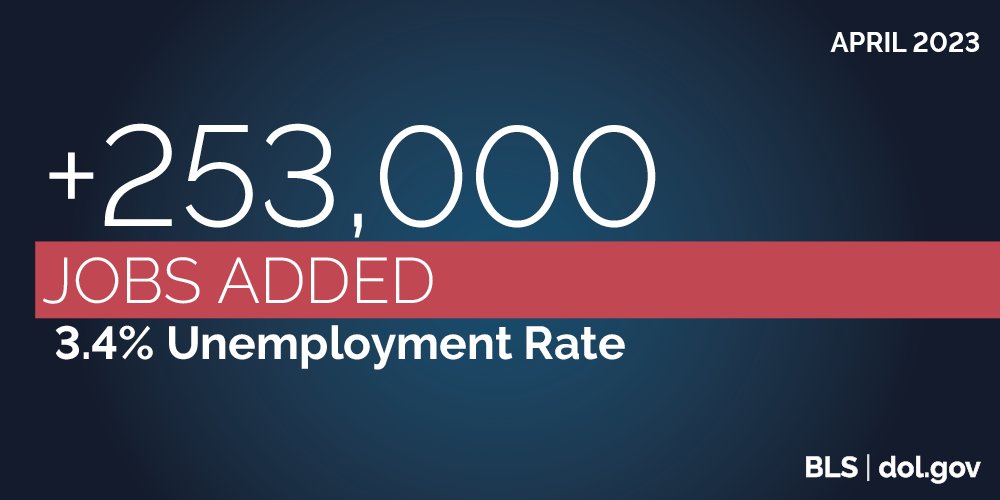
“Factoring large downward revisions of 149,000 to the monthly gains in February and March, the average over the past three months is 222,000,” reported Jared Bernstein, Acting Chair of the White House Counsel of Economic Advisers.
The number of unemployed persons, at 5.7 million, went down slightly from 5.8 million in March. The unemployment rate has ranged from 3.4 percent to 3.7 percent since March 2022, BLS pointed out.
Long-term Unemployment Numbers
The number of job losers and persons who completed temporary jobs decreased by 307,000 in April to 2,642,000. This is good news.
However, the “Great Resignation” continued its stubborn growth as the number of long-term unemployed (those jobless for 27 weeks or more) continued to grow a small bit larger to 1,156,000, compared to 1,104,000 in March. However, these individuals now accounted for 20.6% of all unemployed persons in April, compared to only18.9% in March (a growth of 1.7% in April alone).
Labor Force Participation – Record High for “Prime Age” Women
Both the labor force participation rate, at 62.6 percent, and the employment-population ratio, at 60.4 percent, were unchanged in April. These measures remain below their pre-pandemic February 2020 levels (63.3 percent and 61.1 percent, respectively), BLS stated.
At 83.3% in April, the labor force participation rate for all prime-age workers (25-54) is the highest since March 2008. The rate for women in this category increased by 0.4 percentage points to 77.5% and is the highest ratio on record since the series began in 1948. #JobsReport pic.twitter.com/EhgzOyhgk4
— U.S. Department of Labor (@USDOL) May 5, 2023
The number of persons employed part-time for economic reasons was 3,903,000 in April, down from 4,102,000 in March. This is good news. But the number of persons not in the labor force who currently want a job increased dramatically by 346,000 over the month to 5,271,000 (a 14+% increase over the prior 4,925,000). Nonetheless, this is good news for recruiters.
As more evidence the “Great Resignation” continues, the number of persons marginally attached to the labor force increased almost 7% from 1,289,000 to 1,480,000 (+191,000 ) in April alone. (“Marginally attached” workers are those persons not in the labor force who say they want and are available for work, have looked for a job sometime in the prior 12 months, but not in the 4 weeks preceding the unemployment survey. NOTE: Because they have not looked for work in the last 4 weeks, BLS does not count those persons ”marginally attached” to the workforce as “unemployed”). The number of “discouraged workers,” a subset of the “marginally attached” who believed that no jobs were available for them, increased almost 4% in April to 364,000, compared to 351,000 in March (+13,000 in April).
Major Worker Groups
The BLS/DOL charts below illustrate the numbers by race and ethnicity:
Our table below compares the major worker groups’ numbers from the last three months of available data:
|
The Employment Situation – April 2023 |
||||
| Unemployment Rate | February 2023 | March 2023 | April 2023 | Feb 2020 Pre-Pandemic |
| National (Seasonally adjusted) |
3.6% | 3.5% | 3.4% | 3.5% |
| White | 3.2% | 3.2% | 3.1% | 3.0% |
| Black | 5.7% | 5.0% | 4.7% | 6.0% |
| Asian | 3.4% | 2.8% | 2.8% | 2.5% |
| Hispanic (Seasonally adjusted) |
5.3% | 4.6% | 4.4% | 4.4% |
| Native Hawaiians & Other Pacific Islanders | 2.8% | 1.2% | 3.4% | 2.7% |
| Two or More Races (Not seasonally adjusted) |
4.9% | 4.7% | 4.4% | 6.1% |
| Men (20+) | 3.3% | 3.4% | 3.3% | 3.2% |
| Women (20+) (Seasonally adjusted) |
3.2% | 3.1% | 3.1% | 3.1% |
| Veteran (Not seasonally adjusted) |
2.5% | 2.4% | 2.1% | 3.7% |
| Individuals with Disabilities (Not seasonally adjusted) |
7.3% | 8.2% | 6.3% | 7.8% |
BLS has additional, interactive graphs available here.
See Also:
- President Biden’s remarks
- USDOL Assistant Secretary for Public Affairs Julie McClain Downey’s remarks (Acting Secretary of Labor Julie Su did not issue a statement.)
- USDOL video short illustrating the report
- White House Counsel of Economic Advisers’ blog
In Brief
Monday, May 1, 2023: White House OSTP Requested Public Feedback on Employers’ Use of Automated Technologies
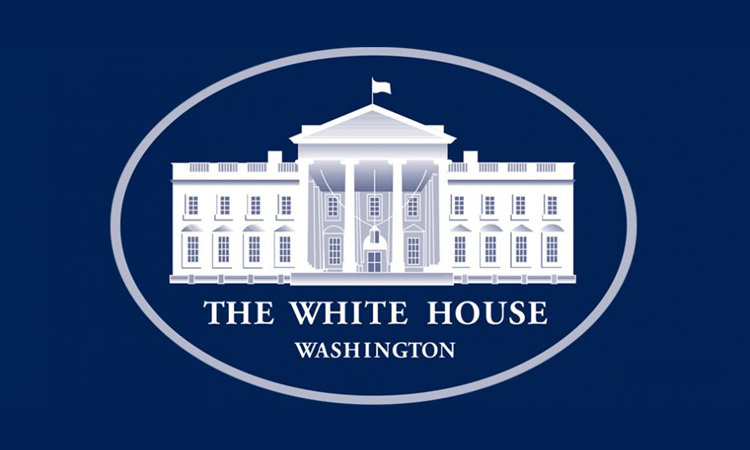
In sum, the RFI seems to be a survey in search of a problem to solve and an invitation to employees to complain about electronic monitoring at work.
It is not clear what the interest of the employer community might be to participate in this voluntary, generalized and public survey. That uncertainty is especially pronounced since the apparent purpose the OSTP has in mind for the employer Comments it receives will be to create regulatory requirements to defeat the use of the employer’s tools. Since the employer Comments will also be public, corporate gadflies, employee advocacy groups and unions will undoubtedly view the Comments to position adversarial positions in opposition to a company’s use of the technology it announces it has built, bought or licensed. Feedback is due by Thursday, June 15, 2023, and may be submitted here or via email to workersurveillance@ostp.eop.gov. To assist commenters in developing their comments, OSTP crafted a list of five questions with multiple subparts. These questions seem largely aimed at employees and advocacy groups to give them a forum to “tattle” on their employers by reporting what they assume or know about their employer’s employee monitoring systems and express their opposition to employer-sponsored employee surveillance at work. Respondents may answer none, or as few or as many of these questions as they wish and may also submit additional feedback.
Thursday, May 4, 2023: With I-9 Flexibilities Ending July 31, Employers Now Have Until August 30 to Complete In-Person Physical Document Inspections
U.S. DHS Plans to Issue Final Rule on Alternative Procedures Allowing Limited Remote Inspections Later This Year

Thursday’s announcement gives employers additional time to perform all required physical examinations of identity and employment eligibility documents for those employees employers hired on or after March 20, 2020, and who have received only a virtual or remote examination under the flexibilities.
On August 18, 2022, DHS issued a Proposed Rule that would allow alternative procedures for the examination of identity and employment eligibility documents. The public comment period on the proposal closed on October 17, 2022. DHS is currently reviewing the 509 comments submitted and plans to issue a Final Rule later this year. For a detailed discussion of this proposal, including “How We Got Here” and links to our multiple previous stories, see our August 2022 story, “USDHS ICE Issued A Proposal to Later (Perhaps?) Create Proposed Permanent Remote Form I-9 Documentation Procedures.”
Thursday, May 4, 2023: USDOL ODEP/JAN Report: Workplace Accommodations Are Low Cost, High Impact
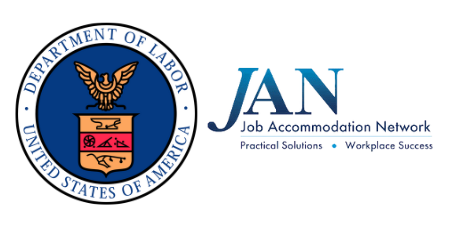
Key findings, based on a survey of 3,528 employers over the past four years, were that nearly half (49.4 percent) of accommodations cost nothing to implement, and 43.3 percent incur a one-time median cost of only $300. In addition, a majority (68.4 percent) of employers surveyed reported that the accommodation they made was either very effective or extremely effective, leading to multiple direct and indirect benefits. Another 18.3 percent of employers said accommodations were somewhat effective.
DEAMcon23 Recap – Day Two
A few weeks ago, we shared a recap of the sessions that took place during day one of DirectEmployers 2023 Annual Meeting & Conference (DEAMcon23), and now we’re back with part two! In this in-depth blog, we highlight each session from day two, with topics including DE&I, recruitment marketing, college recruiting, affirmative action planning, and so much more.
Looking Ahead:
Upcoming Date Reminder
December 2022: U.S. DOL WHD’s (now overdue) target date to publish a Notice of Proposed Rulemaking to Analyze Public Comments on its proposed rule regarding Nondisplacement of Qualified Workers Under Service Contracts (RIN: 1235-AA42)
December 2022: U.S. OSHA’s (now overdue) target date to publish its Final Rule on Occupational Exposure to COVID-19 in Healthcare Settings (RIN: 1218-AD36) (OSHA submitted this Final Rule to OMB on December 7, 2022)
December 2022: U.S. DOL’s OASAM’s (now overdue) target date to publish Proposed Rule on “Revision of the Regulations Implementing Section 188 of the Workforce Innovation and Opportunity Act (WIOA) to Clarify Nondiscrimination and Equal Opportunity Requirements and Obligations Related to Sex” (RIN: 1291-AA44)
February 2023: U.S. DOL WHD’s (now overdue) target date for its Final Rule on Updating the Davis-Bacon and Related Acts Regulations (RIN: 1235-AA40)
March 2023: OFCCP’s (now overdue) target date for its Notice of Proposed Rulemaking to Require Reporting of Subcontractors (RIN: 1250-AA15)
March 2023: OFCCP’s (now overdue) target date for its Final Rule on Pre-Enforcement Notice & Conciliation Procedures (RIN: 1250-AA14)
March 2023: OFCCP’s (now overdue) target date for its Final Rule on “Technical Amendments” to Update Jurisdictional Thresholds & Remove Gender Assumptive Pronouns (RIN: 1250-AA16)
April 2023: OFCCP’s (now overdue) target date for its Notice of Proposed Rulemaking to “Modernize” Supply & Service Contractor Regulations (RIN: 1250-AA13)
Monday, April 24, 2023: Comments due on USDOL Wage & Hour Division’s Proposal to Revise Existing WD-10 Form for Federal Construction Contractors – https://www.regulations.gov/commenton/DOL_FRDOC_0001-2065
May 2023: U.S. DOL WHD’s target date for its Notice of Proposed Rulemaking on Defining and Delimiting the Exemptions for Executive, Administrative, Professional, Outside Sales and Computer Employees (RIN: 1235-AA39)
May 2023: U.S. DOL WHD’s target date for its Final Rule on Employee or Independent Contractor Classification Under the Fair Labor Standards Act (RIN: 1235-AA43)
Tuesday, May 9, 2023: Public comment deadline on FTC’s “Request for Information” on franchise agreements and franchisor business practices – https://www.regulations.gov/commenton/FTC-2023-0026-0001
Thursday, May 11, 2023 (2:00 – 3:00 pm ET): Recruit Rooster Webinar|Attract, Engage, & Nurture Top-Tier Job Seekers with the Power of Video – Register here
Wednesday, May 17, 2023: Deadline to submit comments on OFCCP’s Modifications to Its Proposed Changes to Its Supply & Service Contractor Scheduling Letter & Itemized Listing – https://www.regulations.gov/commenton/DOL_FRDOC_0001-2080
Tuesday, May 30, 2023: Public comment deadline on OFCCP’s proposal to modify its complaint intake procedures – https://www.regulations.gov/commenton/DOL_FRDOC_0001-2088
Thursday, June 1, 2023: Deadline to submit comments on U.S. EEOC’s proposal to eliminate counting employees to determine filing “type” for EEO-1 Survey Component 1 – https://www.regulations.gov/commenton/EEOC_FRDOC_0001-0310
Tuesday, June 6, 2023: Comments due on Proposed OMB Circular No. A-4, “Regulatory Analysis” – https://www.regulations.gov/commenton/OMB_FRDOC_0001-0337
Tuesday, June 6, 2023: Deadline for comments due on proposed revisions to OMB Circular A-94 (Guidelines and Discount Rates for Benefit-Cost Analysis of Federal Programs) – https://www.regulations.gov/commenton/OMB-2023-0011-0001
Tuesday, June 6, 2023: Comments due on OMB’s implementation of Section 2(e) of the “Modernizing Regulatory Review” E.O. – https://www.regulations.gov/commenton/OMB_FRDOC_0001-0333
Thursday, June 29, 2023: Deadline for covered federal contractors and subcontractors to certify, via OFCCP’s online Contractor Portal, that they have developed and maintained affirmative action programs for each establishment or functional unit – https://www.dol.gov/newsroom/releases/ofccp/ofccp20230320
August 2023: U.S. NLRB’s target date for its Final Rule on Standard for Determining Joint-Employer Status (under the NLRA) (RIN: 3142-AA21)
August 2023: U.S. NLRB’s target date for its Final Election Protection Rule (RIN: 3142-AA22)
Friday, August 11, 2023: Deadline for Presenter Proposal Submissions for DEAMcon 2024 – https://deamcon.org/call-for-presenters/
Wednesday, April 3 – Friday, April 5, 2023: DEAMcon24 New Orleans
THIS COLUMN IS MEANT TO ASSIST IN A GENERAL UNDERSTANDING OF THE CURRENT LAW AND PRACTICE RELATING TO OFCCP. IT IS NOT TO BE REGARDED AS LEGAL ADVICE. COMPANIES OR INDIVIDUALS WITH PARTICULAR QUESTIONS SHOULD SEEK ADVICE OF COUNSEL.
SUBSCRIBE.
Compliance Alerts
Compliance Tips
Week In Review (WIR)
Subscribe to receive alerts, news and updates on all things related to OFCCP compliance as it applies to federal contractors.
OFCCP Compliance Text Alerts
Get OFCCP compliance alerts on your cell phone. Text the word compliance to 55678 and confirm your subscription. Provider message and data rates may apply.

